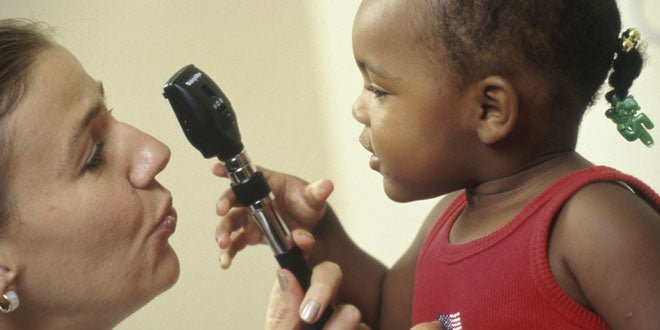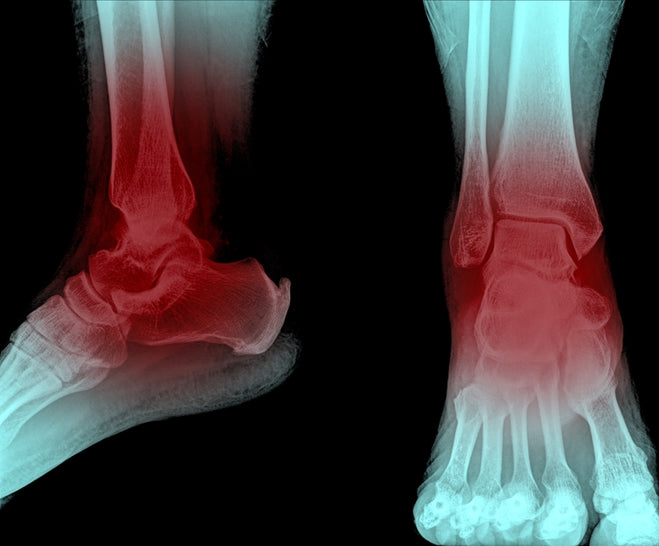Commentary by Ralph Campbell, MD
What happened to curiosity as it pertains to searching for causes of poor health? Maybe it's payback. Lack of curiosity leads to the next step: complacency. Some doctors and patients have retained their curiosity, but many more have not. Over the last several decades, there has been a cultural shift in attitudes about healthful living from seeking core causes of ill health over to pharmaceutical treatment. This extends from a clash between "anecdotal (experiential) evidence" and "evidence-based" science. There is little evidence of altruism in the pharmaceutical industry, as profit is the driving force. The industry has maximized the use of the new communications technology to assure the public that drugs and immunizations are effective (with caveats included in the 60-second TV commercials) and provide most of all one needs to know to prevent illness. Although the medical/pharmaceutical industry does admit that avoidance of tobacco and moderation of alcohol intake is a good idea, it dismisses questions of the toxicity of many things in our environment and of the importance of understanding either deficiencies or excesses of nutrients, with "more studies are needed." The medical approach seems to require especially rigorous methodology to be employed in evaluating health claims of nutrients. However, the fact is that there already is a robust scientific literature on the use of excellent nutrition to prevent and reverse many progressive diseases such as heart disease, diabetes, and cancer and acute diseases such as pneumonia and septic shock . Many are satisfied with symptom relief provided by drugs. Faith is put in technology and the way doctors use it and in our government agencies that are designed to protect our health. There seems to be little curiosity to search for the "why" of disease. It is tough for a doctor with an old-fashioned style to establish a good rapport with his/her patient, to have a necessary two-way exchange of ideas, due to medical insurance's restraint on both time spent and reimbursement for the doctor. With such restriction, many would say, "There is nothing we can do about it; so just live with it." I disagree.
Forward Into the Past
With the food revolution of the '60s, and the reintroduction of "whole foods," there was great enthusiasm for learning more. Not much attention was paid to setting up double-blinded nutrition studies that couldn't be designed as they are with drug testing. A drug is typically intended to either enhance or depress a specific factor. Nutrients cannot be so singled out because they work in concert (and provide no profit for the pharmaceutical industry). Back then, the patient's observations were considered powerful testimony: feeling better and enjoying real food more really mattered. There was time for this to be discussed with the doctor, and a plan that was mutually agreeable was formed. For an example of how this two-way communication highway was helpful in fighting disease, take the case of constipation. Switching to a high fiber diet was effective in ridding the patient of this previously hush-hush subject. Talking about it inspired the doctor to learn more, from which he or she got the concept of a more rapid digestive transit time that exposed the gut lining to less contact with carcinogens in the diet. No drugs are required for this kind of health plan. It simply works. We can learn from that.
So the problem is not so much to see what nobody has yet seen, as to think what nobody has yet thought concerning that which everybody sees. (Arthur Schopenhauer, 1851)
Not-so-morbid Curiosity
Very recently, I read a fascinating article in the Saturday Evening Post about the history of autopsies. For well over a century, an autopsy has been recognized as a valuable learning tool for doctors and future doctors. "Through the first half of the 20th century, about 50% of all patients who died in a U.S. hospital had autopsies," wrote Brendan Reilly, M.D.. Hospitals, especially teaching hospitals, were rated according to their autopsy rate, which sometimes was well above 50%. Then came the idea that, with all the new technical diagnostic aids, autopsies were no longer needed. This was along with fear (in this litigious society) that a misdiagnosis might be revealed that would put the doctor in a bad spot, plus the expense, and the possibility of causing more grief to the survivors. In the '60s, even obituaries were likely to go into details of the cause of death since there was greater interest (curiosity) in rapidly changing ideas in the fields of cardiology and oncology. In the Journal of the American Medical Association (JAMA), a physician's obituary told it all: tobacco and alcohol use, diet, lifestyle, plus autopsy reports. It was interesting to see the correlation between unhealthful living and pathology. In the cases of immigrants, aged in their late fifties or early sixties, one could notice the effect of coming from a culture so different from the U.S.. Also, during that time, JAMA published the incidence of cancer worldwide. Interestingly, countries with a "hot" cuisine had a low to non-existent incidence of bowel cancer. Contrast this with a common obituary of today: Mr.---, 75, died of natural causes (meaning he wasn't "done in" by accident or drugs) or of cardiac arrest --- which tells one nothing, since it is usual to have the heart stop beating after any cause of death. It is more helpful when, rather than reading "he died after a courageous battle with cancer," to hear what kind of cancer and the details of the battle. If the unfortunate family survivors can extend their good will to those reading the obituary, an attempt to pinpoint cause would be helpful to others. We should all be curious, even enthusiastic, to learn more about core causes of disease as well as the factors that stifle any such enthusiasm to do so. New theories need to be continually developed and brought to the attention of others, who are also searching for answers, so that they might put two and two together. "The best way to have a good idea is to have a lot of ideas." (Linus Pauling, 1961) Alexander Fleming, who discovered penicillin G, probably didn't start his day by saying, "I feel like I am going to make an earth-shaking discovery today" as he noticed the clear area around the blue mold on his bacterial culture plate. But being a man who exercised scientific curiosity, he recognized that he might be on to something important. We may tend to take antibiotics for granted, but where they are ineffective (e.g. a viral infection), modern science has now shown tremendous potential for essential nutrients in reversing disease and maintaining health. The science of nutrition is complex, but has great potential to help anyone curious enough to really look into it. (Pediatrician Ralph Campbell, M.D., nearly but not quite 90 years young, is frequently outdoors attending to his large cherry orchard. A frequent commentator for the Orthomolecular Medicine News Service, Dr. Campbell is the author of The Vitamin Cure for Children's Health Problems and also The Vitamin Cure for Infant and Toddler Health Problems.)
To learn more:
1. Natural Vitamin E Prevents, Reverses Lung Cancer http://orthomolecular.org/resources/omns/v10n07.shtml
2. Vitamins can be Lifesaving in More Ways than One http://orthomolecular.org/resources/omns/v12n10.shtml
3. The Metabolic Roots of Cancer - http://orthomolecular.org/resources/omns/v12n08.shtml
4. Roberts H, Hickey S, The Vitamin Cure for Heart Disease: How to Prevent and Treat Heart Disease Using Nutrition and Vitamin Supplementation. Basic Health Publications, Inc.; 2011. ISBN-13: 978-1591202646
5. Brighthope IE, The Vitamin Cure for Diabetes, Basic Health Publications, Inc.; 2012. ISBN-13: 978-1591202905
6. Vitamin C Papers Hot off the Press. http://orthomolecular.org/resources/omns/v13n06.shtml
7. Levy TE, Primal Panacea. Medfox Publishing; 2nd Printing edition (January 1, 2011), ISBN-13: 978-0983772804.
8. Nathens, A.B. et al. Randomized, prospective trial of antioxidant supplementation in critically ill surgical patients. Ann Surg 236(6) (Dec 2002):814-22.
9. Berger, M.M. Vitamin C requirements in parenteral nutrition. Gastroenterology 137(5 Suppl) (Nov 2009):S70-8.
10. Fowler Iii AA, Kim C, Lepler L, Malhotra R et al. Intravenous vitamin C as adjunctive therapy for enterovirus/rhinovirus induced acute respiratory distress syndrome. World J Crit Care Med. 2017 Feb 4;6(1):85-90. doi: 10.5492/wjccm.v6.i1.85.
11. Gao YL, Lu B, Zhai JH et al. Parenteral Vitamin C improves sepsis and sepsis-induced multiple organ dysfunction syndrome via preventing cellular immunosuppression. Mediators Inflamm 2017; doi: 10.1155/2017/4024672.
12. Zabet MH, Mohammadi M, Ramezani M, Khalili H. Effect of high-dose Ascorbic acid on vasopressor's requirement in septic shock. J Res Pharm Pract. 2016 Apr-Jun;5(2):94-100. doi: 10.4103/2279-042X.179569.
13. Carr AC, Shaw GM, Fowler AA, Natarajan R. Ascorbate-dependent vasopressor synthesis: a rationale for vitamin C administration in severe sepsis and septic shock? Crit Care. 2015 Nov 27;19:418. doi: 10.1186/s13054-015-1131-2.
14. Vitamin C for Pneumonia http://orthomolecular.org/resources/omns/v12n18.shtml
15. Fisher BJ, Seropian IM, Kraskauskas D, et al: Ascorbic acid attenuates lipopolysaccharide-induced acute lung injury. Crit Care Med 2011; 39:1454-1460






